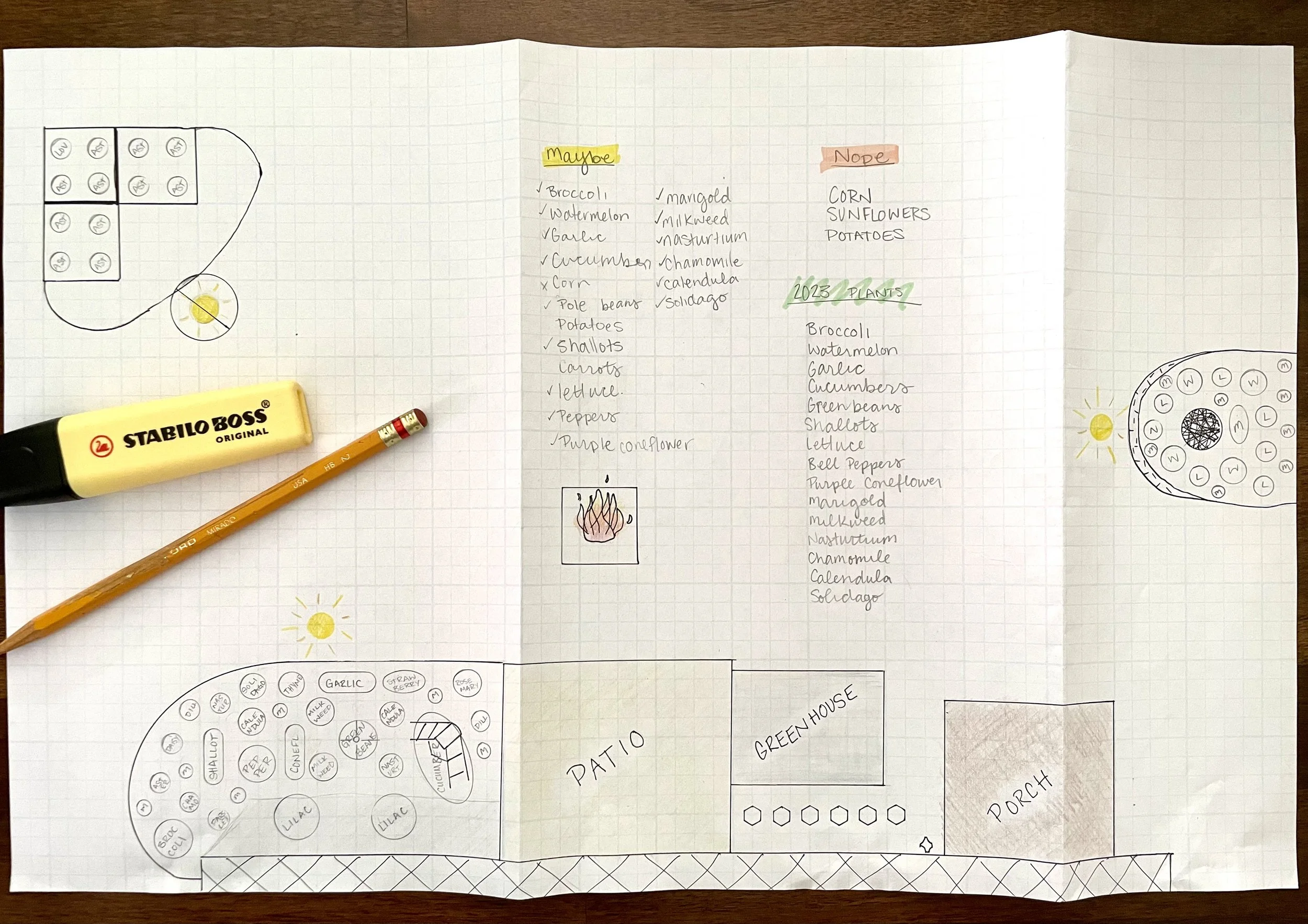Companion Planting in the Garden
What is companion planting?
Companion planting is the practice of planting a variety of plant species that mutually benefit each other to improve the health of both plants and prevent them from pests.
Why is it beneficial?
I haven’t met anyone who enjoys their plants being eaten by pests. I also haven’t met anyone who enjoys slow growing and struggling plants that yield little harvest. What’s the answer? Companion planting. By choosing to harness the power of the symbiotic relationships of plants, you increase your harvest and decrease pests. So simple.
How to begin
Make a list
When I plan out my garden, I start by making a list of the things I want to grow, including the perennials already established. It’s usually a long list. This list always starts with knowing what grows best in your area. Do some research on your zone and the plants that grow best where you are. Which leads me to…
Do your research
Once I’ve made my list of plants, I start researching the best companions for that plant. Sometimes this adds more items to my plant list, and some end up eliminated because they aren’t beneficial to the other things I want to grow. You can work around elimination to a certain degree by planting things farther apart but for people growing in small spaces, like myself, I’m limited by the number of garden beds I have. This means making the hard call to give up a plant that just won’t work with the other things I’d like to grow more.
Arrangement
This usually goes alongside my research stage, when I write and erase plants that may not work together and relocate it where it will be more successful. Basically, I sketch out what my garden spaces look like and create a diagram of the garden. Then I pencil in plants where they will work best, starting with the perennials that preexist in the space. Much like a puzzle, it can be a trial and error situation until you find the right configuration.
My biggest tips
Make a plan
This year, I was late to the game in starting seeds and directly sowed several that missed the prime planting window. I still have growing plants but I could have a much more successful garden by now if I had made a better plan… and stuck to it. (Sticking to it is another story.) The point is, plan out what you want to grow and when the best time to grow them is.
Be open minded
There was a time that I didn’t love marigolds. Marigolds are a companion gardeners dream because there are very few plants that do not benefit from them. Now they are a staple in my garden every year. I’ve grown to not just welcome them, but love the scent and bright blossoms.
Prepare for failure
This is one of the worst parts of gardening in general, but even with the intentionality of companion planting, you’ll find things that don’t work. Certain plants will still be destroyed by pests or disease. Something else will die from extreme heat or heavy rains. Then its companion might not be as successful. Nature does that. Journaling the successes and failures will help you learn how to improve next time.
Companion planting is the solution that every gardener should practice to improve the success of their plants and prevent those precious plants from being destroyed by pests. By taking on these methods, I’ve learned a lot about nature and its ability to protect itself. There’s a sense of magic about it. Go give it a try and see for yourself!
While you’re out there, you’ll need the right gear. A soft, movable tee is the perfect solution. Get yours here!



